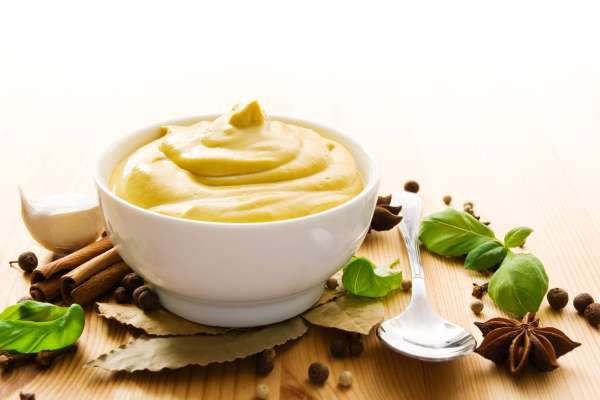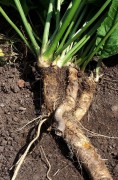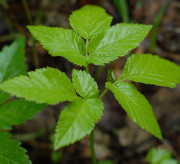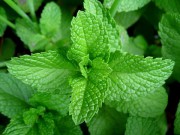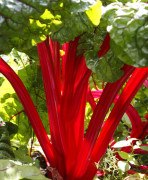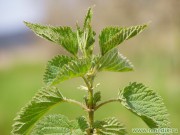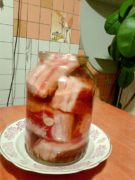Types and varieties of mustard.
There are a great many varieties and types of mustard. It is for this reason that it is called the rainbow family. Let's try to briefly talk about the most famous and popular of them.
From the available variety, the so-called white mustard is distinguished, although in fact its color is rich yellow. It is practically not spicy, as they say - “you can eat it with a spoon.”
The next variety is Sarpet or brown mustard. It is the most used and widespread. You will most often find it on store shelves around the world. The taste of this mustard is more piquant and, unlike white mustard, much sharper and more aromatic.
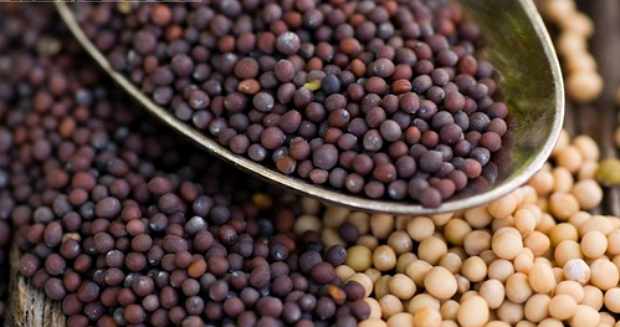
And another variety of mustard - black. The shade of mustard itself is brownish-red. It is the most spicy, you need to eat it carefully. It is better not to load stomachs that are not accustomed to spicy food with this variety. Note that black mustard, or rather its cake, is an excellent fertilizer used in agriculture.

In cooking, mustard is used to make many different seasonings and sauces. The most “evil” or hottest is the so-called “Russian” mustard. But “American” and numerous European varieties are much softer and more delicate.
For housewives who love to tinker in the kitchen, many recipes for making homemade mustard have been created. By preparing it at home with your own hands, you can be sure of 100% benefits and the absence of harmful impurities. When saving mustard, you should remember that it is afraid of direct sunlight and it is better to store it in a dark glass jar and always in the cold. Dry mustard powder is stored in knitted bags.
Let us consider in detail the existing types of mustard and their historical past. What advantages do they have and how do they differ?
Black mustard (Brassica nigra Koch)
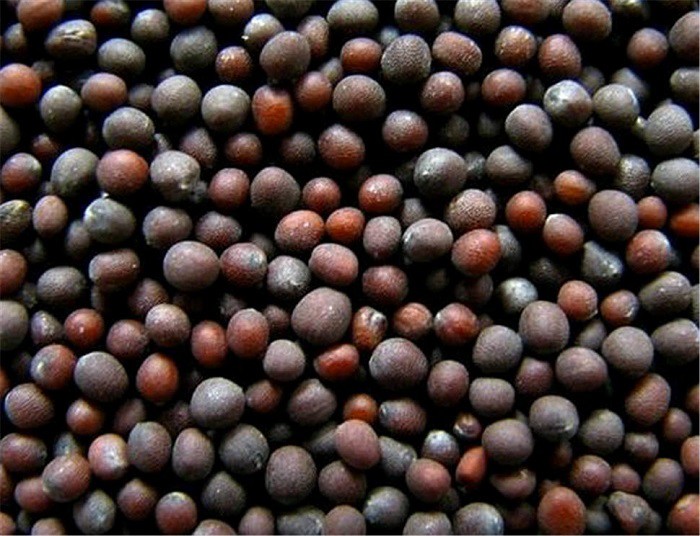
It is also called French or real mustard. This species is grown in the fields of France and Italy. French mustard seeds have a mild odor; they are used to make famous varieties of table mustard (Dijon mustard or Ravigot sauce), which occupy the bulk of mustard counters in all countries of the world.
Sarepta mustard (Brassica juncea Czern) - of Russian origin, it is also called “blue mustard”.
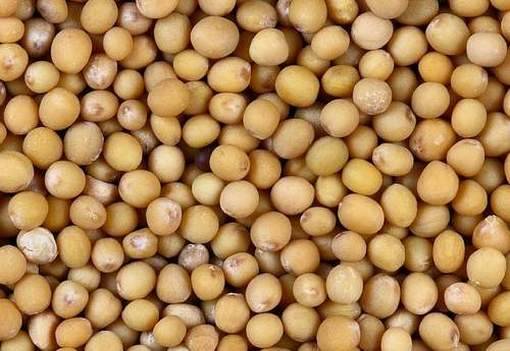
Russia, Kazakhstan, Ukraine, the Caucasus, even Siberia and the Far East are some of the main places of its cultivation. The plant is not particularly picky about the soil and its composition. Its taste properties are very close to black. It is most often found on sale in the form of flour and the lighter the shade, the better its quality.
White mustard (Brassica alba Boiss)
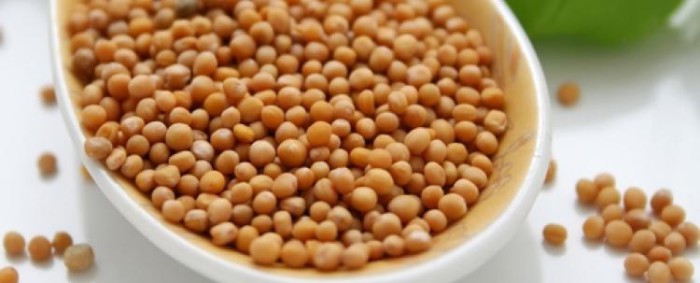
Although it is called English, there are enough fields with this variety in Russia and Ukraine. Its lack of odor forces the use of additional spices when preparing seasonings and sauces. So, unlike previous varieties, its quality is much lower. It is cultivated mainly for the production of mustard oil.
Dijon mustard
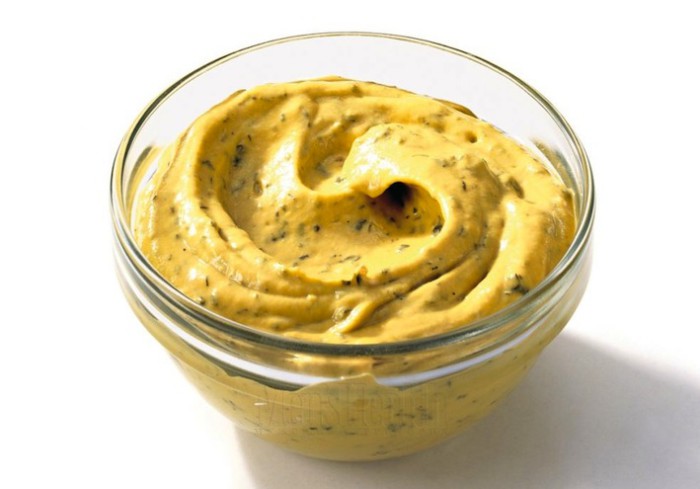
It has been popular since the beginning of the 18th century. In Dijon (the capital of Burgundy), manufacturers competed fiercely in search of original, tasty seasonings: from “bitter tears” to the lightest, almost sweet. The current recipe for Dijon mustard was invented in 1850. The manufacturer, MaChé, maintains its own store in Dijon, where they continue to produce exotic-tasting seasonings. Dijon mustard has a strong taste and strong aroma, but a delicate, uniform texture.
Grainy mustard from Meaux - a town in France
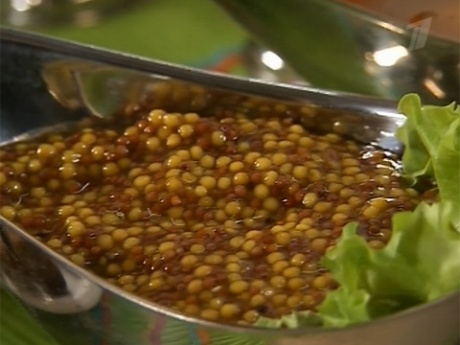
What immediately makes you pay attention to her is her non-standard presentation. Today in its homeland, as in the old days, it is supplied in small ceramic jars with a cork lid and a red wax seal. This appearance gives it historical significance and uniqueness. In France, mustard was grown by monks, and it was they who made useful adjustments to the recipe. The years of creation of this mustard vary from several sources, and it is very difficult to say who is right. Just like in Dijon mustard, brown mustard seeds Brassica juncea are used here, but the preparation process itself has a significant difference. When shelling the seeds, the husks in Dijon mustard were discarded, and the husks were immediately used as an integral ingredient of the product. The seeds were soaked in alcohol with a strength of up to 13 degrees (usually vermouth), salted and seasoned with spices. Next, they were crushed and combined with the husk. This mustard has an excellent taste, softer, although quite spicy. Its extraordinary appearance attracts attention - the granular structure is highlighted. It goes well with a variety of dishes, but makes a special impression with fried meat.
Today, Canada is the main exporter of mustard seeds. It has a good market in central Europe, as mustard cultivation is very rare there.
Bavarian sweet mustard or “mustard for white sausage”
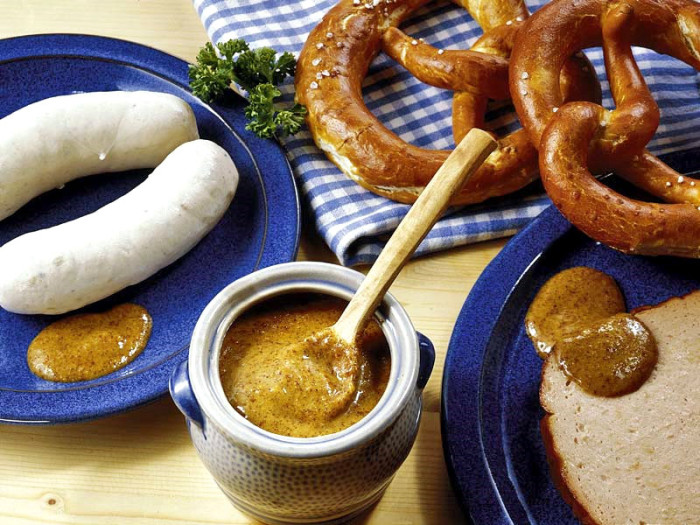
Germany is known to everyone as the birthplace of Bavarian sausages. And the famous Munich white veal sausage - weisswurst - has indeed captivated connoisseurs of meat and sausage delicacies. The absence of mustard here is simply unacceptable! Bavarian mustard adds a special piquancy to its taste.Therefore, in Germany, and not only in Germany, it is called “mustard for white sausage.”
Fruit mustard (bollito misto)
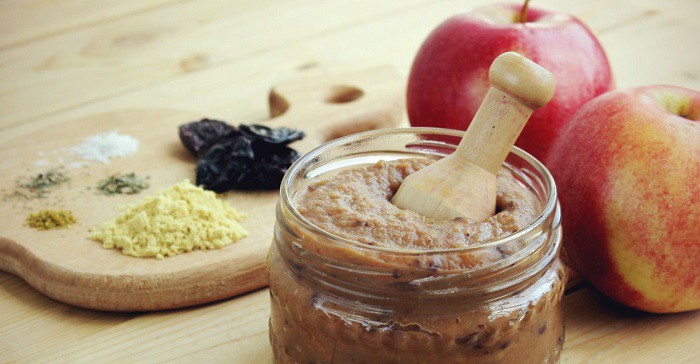
This is an extraordinary, one might say, specific delicacy of the city of Cremona in Lombardy. Italians are gourmets and Italian cuisine is famous among many cuisines of the world. Their idea to invent a culinary masterpiece from fruits, enriching it with mustard, was a very pleasant surprise and delight. Looking through the “culinary” history of Ancient Rome, you pay attention to the peculiar taste “reigning” there, to the combination of incompatible ingredients, to the search for a balance between sour and sweet. Fruit mustard is a vivid example of this, although it arose for more “beggarly” reasons, when Italians, during a period of starvation, tried to preserve for a longer time everything that was given by nature. In those centuries, when sugar was practically inaccessible to an ordinary family and was considered a luxury, sweet fruits (apricot, pear, cherry) were processed with grape must. The fruit was removed from the syrup, and the sauce was seasoned with mustard and vinegar. Next, it was evaporated over the fire until it became a thick jam. The method of preparing fruit mustard has been slightly changed these days. The fruit is initially sugared and then bottled in a tangy syrup. This mustard goes well with meat dishes, but the wine aroma, combined with the moderate pungency of fruit mustard, fits perfectly with numerous varieties of Italian hard cheeses.
Sichuan mustard, Ya choy or Sichuan pickled vegetable - also used in Chinese cuisine. The varieties of Southeast Asia are very different from what we are used to. Salad species are grown here, in which both leaves and stems are allowed to be eaten. Despite its not so appetizing appearance, Szechuan mustard is one of the most delicious varieties.It is also known for its medicinal properties, especially its positive effect on appetite.
Fresh mustard stalks are pickled, covered with chili paste and marinated in a tall clay jug, up to 60 cm high. This jug is made using a special technique. It must be whole and vegetables can only be extracted by breaking it. Ya choy can be found commercially in Chinese stores or grocery stores. It is sold in the form of pods (slices), hermetically sealed. Before use, wash off excess chili. Szechuan mustard is a fairly salty product - this should be taken into account when adding to salads.
Chinese mustard (Brassica juncea) - This variety has wrinkled light brown stems and soft dark green leaves. In Cantonese it is called gay choi or gay slaw. Like Szechuan mustard, it does not have a very attractive appearance, but in cooking, the main thing is not to look, but to try. Chinese mustard has a harsh salty-sweet taste with a bitter aftertaste, reminiscent of salad mustard. Brassica juncea has two subspecies: sweet and salty. But despite the name “sweet”, they are both salty. It’s just that the second one, which is “salty”, is so saturated with salt that crystals are visually visible. For sale they are packaged in plastic packaging. Before use, be sure to rinse it to remove excess salt. Then, it is advised to steam for about 10 minutes, after cutting it thinly. Like all types of seasonings, Chinese mustard is very harmonious with pork or poultry.
Which mustard is better

When going shopping, everyone should first understand what they need to buy. When choosing a particular product, you need to carefully read the composition and expiration dates.So which mustard should you buy? Which mustard tastes better? Let's look not at manufacturers, but at two main production methods.
The first is mustard made from grains. It is considered more useful.
The second is made from mustard powder. It is more pungent, but the smell is not pleasing; most often it does not have a pleasant aroma. The problem with powder mustard is that manufacturers save a lot on it. When the grains are pressed, oil is extracted, which is in demand separately, and a powder is prepared from the rest of the cake, which has long been used as an important spice for keeping meat and other products fresh for a long time. To prepare mustard seasoning, cheaper oils (soybean or sunflower) are added to this powder. In modern production, unfortunately, you almost never find products without the addition of stabilizers, dyes, and mustard is no exception. Dyes in its composition cause particular concern. Therefore, buy varieties where turmeric gives the mustard a beautiful yellow color. It is worth paying attention to the vinegar it contains. It is better to buy one that uses apple or wine.
